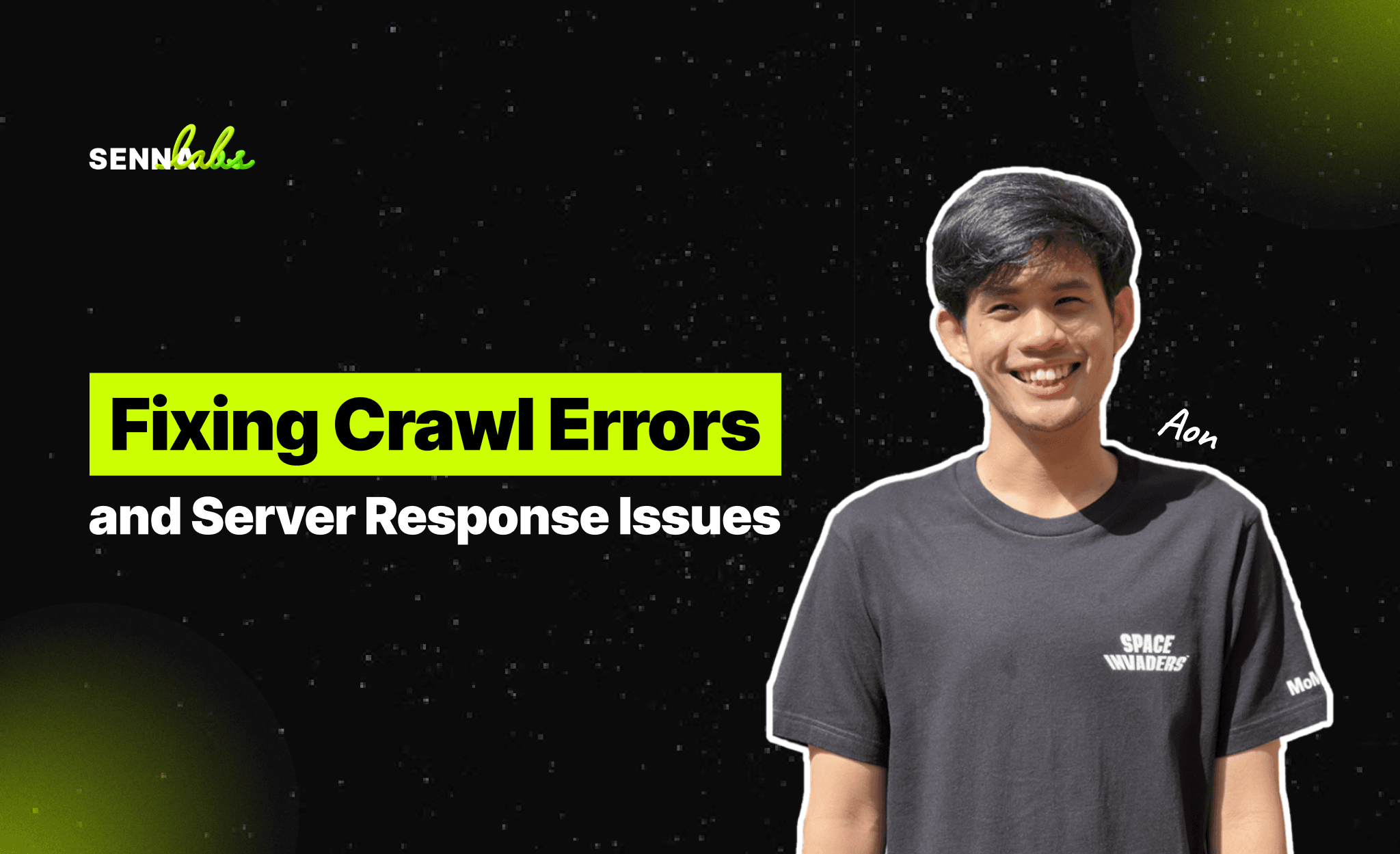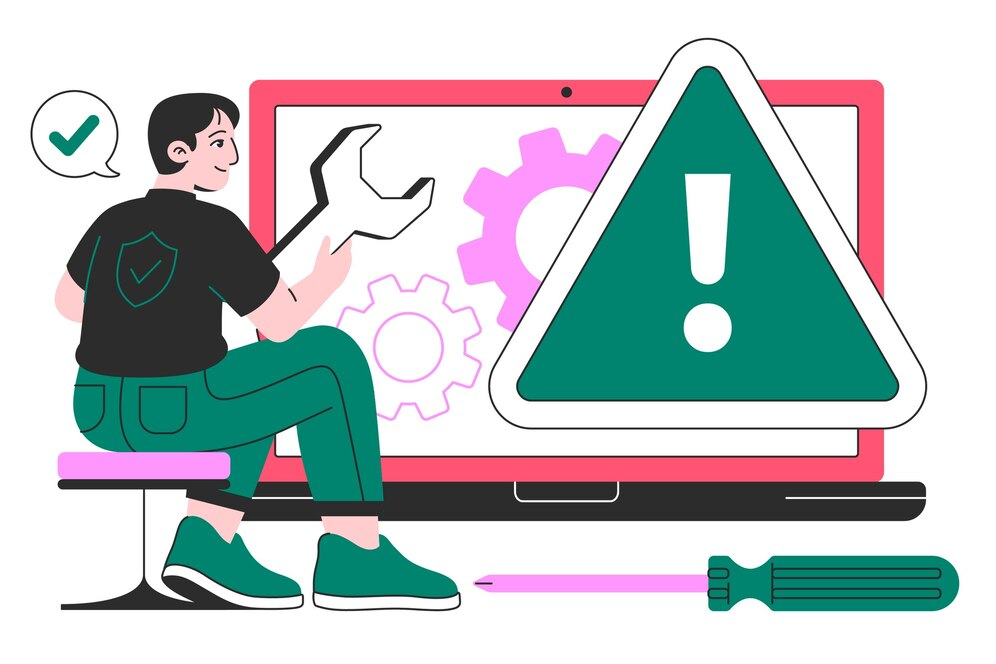Fixing Crawl Errors and Server Response Issues
Share

Search engine crawlers play a vital role in determining how well a website performs in search rankings. These crawlers, such as Googlebot, scan websites to discover, index, and rank content. However, when crawlers encounter obstacles—such as broken pages, server errors, or unreachable domains—their efficiency decreases, resulting in slower indexing, wasted crawl budget, and lost ranking opportunities.
This article explains how to identify and fix crawl errors and server response issues, improving crawlability, user experience, and search engine rankings. It also includes a real-world use case where an enterprise SaaS company resolved over 300 crawl errors, leading to a 25% improvement in crawl frequency and better rankings for new pages.

What Are Crawl Errors?
Crawl errors occur when a search engine bot tries to visit a page on your website but fails to retrieve the content successfully. These errors fall into two primary categories:
1. URL-level Crawl Errors
These relate to specific pages that search engines can’t access, including:
-
404 Not Found: The requested page doesn't exist.
-
403 Forbidden: The server refuses to serve the content.
-
500 Internal Server Error: A generic server failure.
-
503 Service Unavailable: The server is temporarily overloaded or under maintenance.
-
Timeout Errors: The server took too long to respond.
2. Site-level Crawl Errors
These prevent search engines from crawling the entire website, such as:
-
DNS Errors: The domain name can’t be resolved.
-
Server Connectivity Errors: The server is unreachable.
-
Robots.txt Fetch Failures: Search engines can't retrieve your robots.txt file.
Why Crawl Errors Matter for SEO
Search engines allocate a limited crawl budget to each site, based on authority and performance. When bots spend time trying to access broken or error-prone pages:
-
High-value pages may not get crawled.
-
New content takes longer to be discovered and indexed.
-
Ranking potential declines.
Fixing crawl errors improves crawl efficiency, indexing speed, and organic search visibility.
How to Detect Crawl Errors
Detecting crawl issues requires regular monitoring and a combination of SEO tools:
1. Google Search Console
This free tool shows:
-
Coverage reports of indexable and non-indexable pages.
-
URLs returning 404, 500, and soft 404 errors.
-
Server response issues and excluded pages.
2. Server Log File Analysis
Server logs provide raw data on crawler activity. Analyzing logs shows:
-
Which pages are being crawled.
-
How often bots encounter errors.
-
Which status codes are returned.
3. Site Auditing Tools
SEO crawlers like Screaming Frog, Ahrefs, or Sitebulb identify:
-
Broken internal and external links.
-
Redirect chains and loops.
-
Incorrect canonical tags and server errors.
How to Fix Crawl Errors
1. Address 404 Not Found Errors
-
Restore deleted pages if they’re valuable.
-
Redirect outdated URLs to relevant pages using 301 redirects.
-
Update internal links to remove references to broken pages.
2. Resolve 500-Level Server Errors
-
Check server performance and logs for root causes.
-
Increase hosting resources if traffic overload is causing crashes.
-
Work with your hosting provider to identify backend issues.
3. Fix DNS and Connectivity Errors
-
Ensure your DNS settings are correctly configured.
-
Monitor server uptime and response time.
-
Use reliable hosting with low latency and high availability.
4. Improve Robots.txt and Access Permissions
-
Allow bots to access key areas of the site.
-
Fix syntax errors in robots.txt that may block crawlers unintentionally.
-
Ensure pages aren’t mistakenly marked “noindex” or blocked via meta tags.
5. Prevent Redirect Loops and Chains
-
Use a single-step 301 redirect where necessary.
-
Regularly audit redirects to avoid excessive chaining, which wastes crawl budget.
6. Create Custom 404 Pages
-
Offer helpful navigation and links to related content.
-
Reduce bounce rates by helping users find what they need.
Real-World Use Case: SaaS Website Crawl Recovery
The Problem
A fast-growing enterprise SaaS company experienced issues with delayed indexing and ranking of new pages. After reviewing its performance in Google Search Console, the SEO team discovered:
-
Over 300 crawl errors, including 404s and 500 server errors.
-
High bounce rates on key landing pages.
-
Crawl stats indicated that Googlebot was frequently encountering broken or unresponsive pages.
The Audit and Fixes
-
Comprehensive Crawl Audit
-
Used Screaming Frog to identify broken links, redirect chains, and orphan pages.
-
Analyzed server logs to determine crawler paths and error frequency.
-
404 Error Resolution
-
Reinstated valuable landing pages that had been mistakenly deleted.
-
Redirected obsolete URLs to updated equivalents using 301 redirects.
-
Server Error Troubleshooting
-
Upgraded hosting plan to handle traffic spikes.
-
Fixed backend code that was causing timeouts and 500 errors.
-
Internal Link Optimization
-
Cleaned up internal navigation by updating outdated links.
-
Added internal links to new pages to boost discovery.
-
Updated Sitemap and Robots.txt
-
Removed blocked paths that were unintentionally preventing crawl access.
-
Submitted an updated sitemap to ensure proper indexing.
The Results
Within two months:
-
Crawl frequency improved by 25%, allowing new content to appear in search results faster.
-
Indexed page count grew steadily, and error reports in Search Console dropped significantly.
-
Organic traffic increased as previously undiscovered content began to rank.
-
Site structure and server health improved, reducing future crawl errors.
Best Practices for Ongoing Monitoring
-
Check Google Search Console weekly for new crawl errors.
-
Monitor server uptime and response times using uptime monitoring tools.
-
Run SEO crawl audits monthly to catch broken links, redirect chains, and orphan pages.
-
Review server logs quarterly to detect crawl trends and shifts in crawler behavior.
-
Update your sitemap and robots.txt after major site changes or content restructuring.
Conclusion
Crawl errors and server response issues are common but often overlooked barriers to SEO success. Left unresolved, they can significantly reduce a site’s visibility, slow down indexing, and waste crawl budget.
As shown in the SaaS website case study, proactively identifying and resolving these errors can lead to faster discovery of new content, better indexing, and improved rankings.
A consistent technical SEO strategy—centered on clean URLs, fast servers, correct redirects, and accurate crawl directives—ensures that search engines can access and understand your content. For any site, especially those with frequent updates or large-scale content, fixing crawl issues should be a routine part of SEO maintenance.

Share

Keep me postedto follow product news, latest in technology, solutions, and updates
Related articles
Explore all


